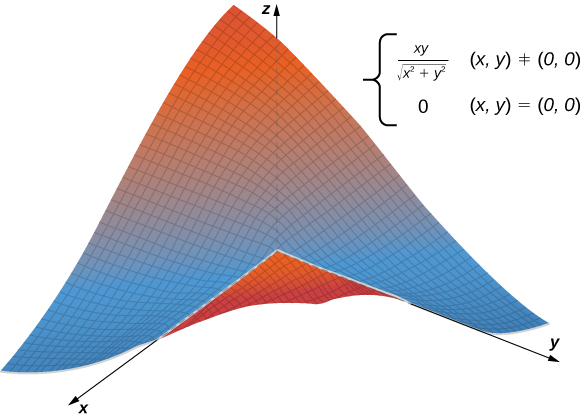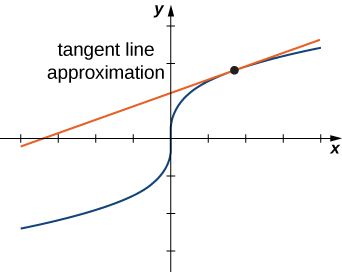| << Chapter < Page | Chapter >> Page > |
Solving this equation for gives [link] .
Find the equation of the tangent plane to the surface defined by the function at point
First, we must calculate and then use [link] with and
Then [link] becomes
(See the following figure).

Find the equation of the tangent plane to the surface defined by the function at point
Find the equation of the tangent plane to the surface defined by the function at the point
A tangent plane to a surface does not always exist at every point on the surface. Consider the function
The graph of this function follows.

If either or then so the value of the function does not change on either the x - or y -axis. Therefore, so as either approach zero, these partial derivatives stay equal to zero. Substituting them into [link] gives as the equation of the tangent line. However, if we approach the origin from a different direction, we get a different story. For example, suppose we approach the origin along the line If we put into the original function, it becomes
When the slope of this curve is equal to when the slope of this curve is equal to This presents a problem. In the definition of tangent plane , we presumed that all tangent lines through point (in this case, the origin) lay in the same plane. This is clearly not the case here. When we study differentiable functions, we will see that this function is not differentiable at the origin.
Recall from Linear Approximations and Differentials that the formula for the linear approximation of a function at the point is given by
The diagram for the linear approximation of a function of one variable appears in the following graph.

The tangent line can be used as an approximation to the function for values of reasonably close to When working with a function of two variables, the tangent line is replaced by a tangent plane, but the approximation idea is much the same.

Notification Switch
Would you like to follow the 'Calculus volume 3' conversation and receive update notifications?